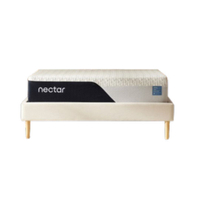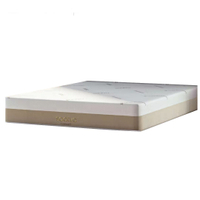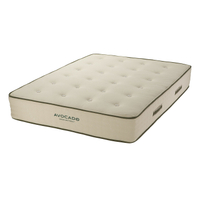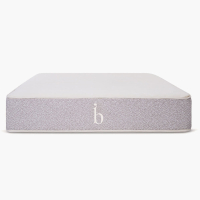Memory foam vs latex mattress: Which one suits your sleep needs better?
Here's how to choose between a memory foam or latex mattress, plus their key differences explained
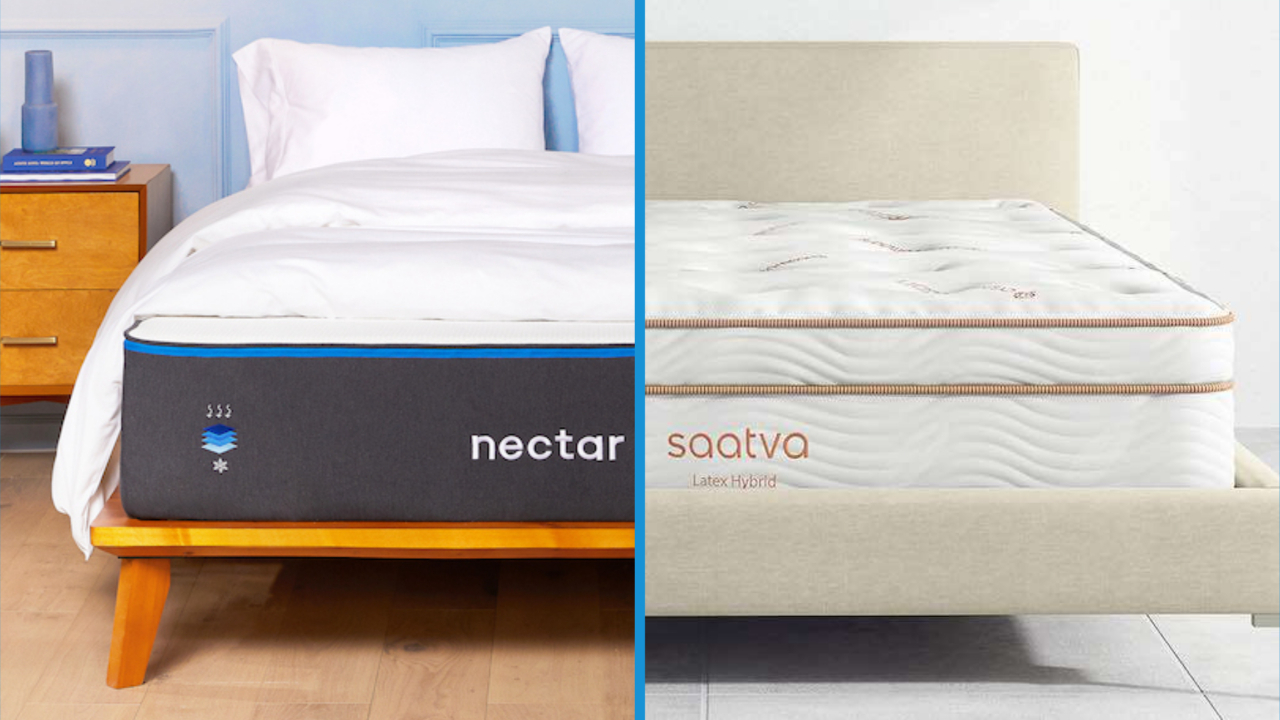
Memory foam and latex mattresses are like two opposite sides of a coin. With memory foam, you'll experience that deep contouring and slow-moving sensation as the material adapts to your body. Latex, on the other hand, is buoyant and breathable with a more subtle cradling effect.
If you're having trouble choosing a winner in the showdown between memory foam vs latex mattresses, we're here to help you out. Both types feature in our best mattress guide, but of course, there are pros and cons to each.
Knowing how memory foam and latex mattresses differ will give you a better understanding of how to pick the right one for your preferences and budget. Let's dive in...
What is memory foam?
Memory foam is a polyurethane foam treated with chemicals to increase its density and viscosity, causing it to react to your body heat and slowly mold to your shape. The technical name is viscoelastic polyurethane foam; NASA originally developed it in the 1960s for aircraft seats.
Memory foam mattresses aren't completely made of memory foam, but rather an assortment of synthetic foams.
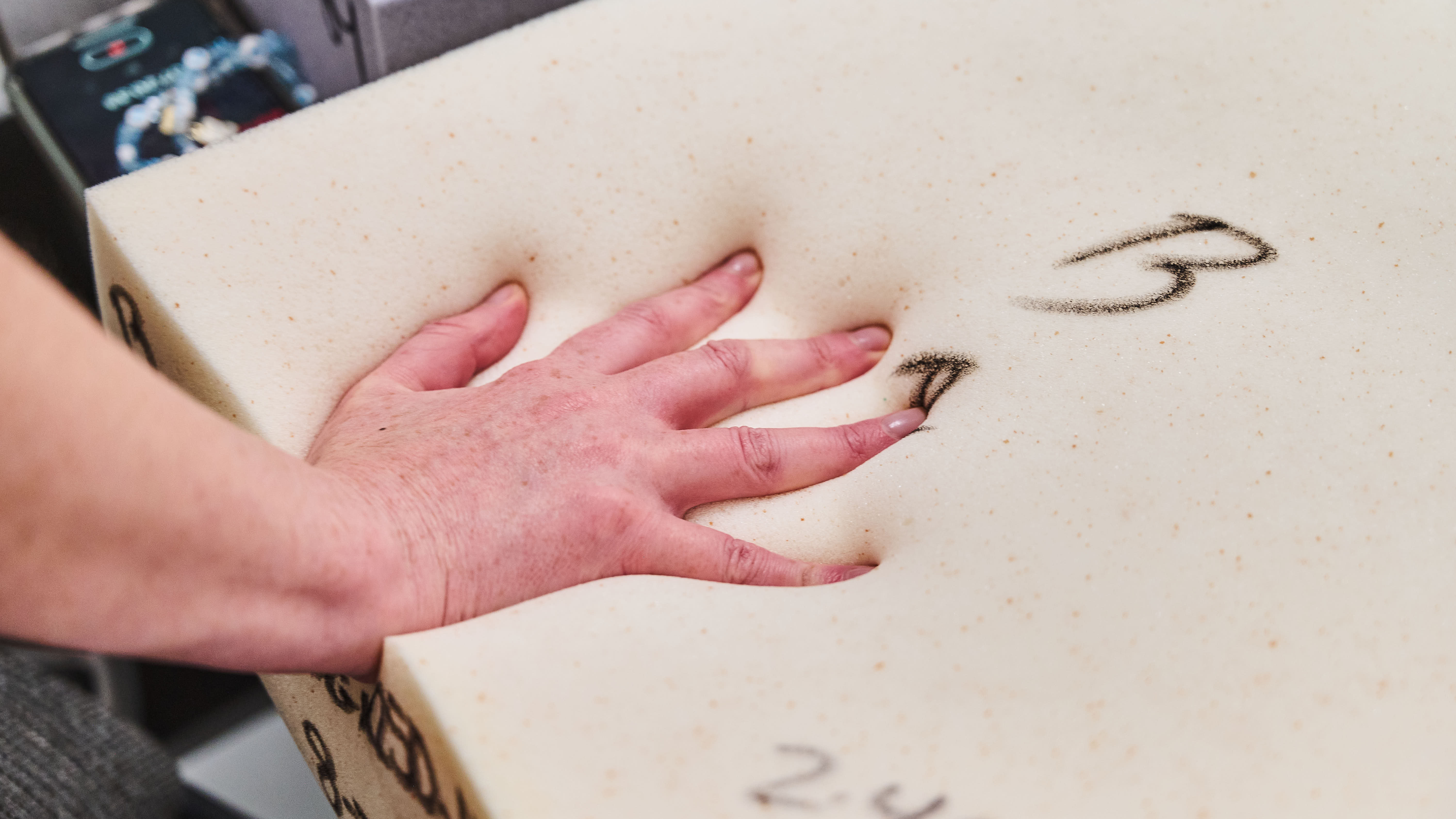
What is latex foam?
There are two types of latex foam: natural latex using sap harvested from rubber trees and synthetic latex made from petroleum byproducts. Blended latex — a combination of synthetic and natural materials — is an affordable alternative to natural latex, which is costly to produce but known for its outstanding durability and breathability.
Organic mattresses feature natural latex, often paired with springs.
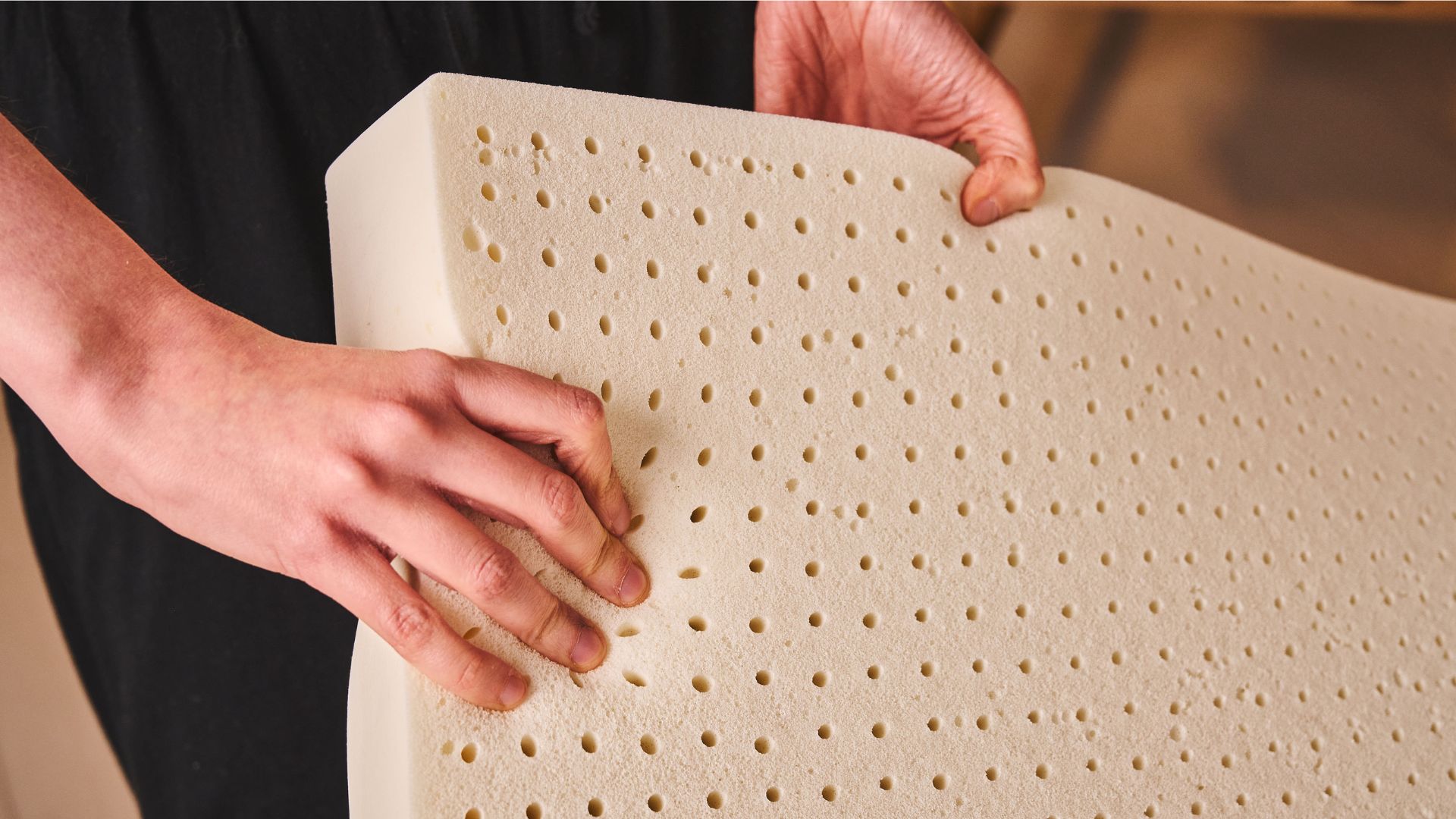
Memory foam vs latex mattresses: Prices and deals
- Latex mattresses are generally more expensive
- Memory foam mattresses span all price points
- You'll find discounts on both types during sales
If you're looking for a cheap mattress, go with memory foam. Mattresses with natural latex tend to be pricey because the material costs a lot to produce, especially if a brand is abiding by strict rules for mattress certifications. (Synthetic and blended latex beds are a little bit cheaper.)
That said, memory foam mattresses span all budgets. If you want a more luxurious bed to sink into, you'll be able to find premium models from Tempur-Pedic, Saatva, and GhostBed. Reliable mid-range memory foam beds are available from brands like Nectar, Casper, and Brooklyn Bedding.
Either way, you'll be able to find discounts on memory foam and latex mattresses during monthly mattress sales. Shopping around major holidays will usually land you some of the best deals of the year.
Whichever type of mattress you opt for, make sure it comes with a decent trial period and warranty. The perks you receive will depend more on the brand than the type of mattress you buy.
Memory foam vs latex mattresses: Characteristics
- Memory foam mattresses tightly hug and contour the body
- Latex mattresses are buoyant and offer subtle pressure relief
- Memory foam is better for motion isolation; latex is more breathable
A memory foam mattress will mold to the shape of your body when you lie down and then gradually return to its original form when you move. Mattresses that use very dense memory foam will be extremely contouring and also do an excellent job of dampening movement.
However, memory foam mattresses are likely to trap heat. To help make them more breathable, brands will either perforate the memory foam or infuse it with cooling gel or a heat conductor such as graphite and copper to disperse heat.
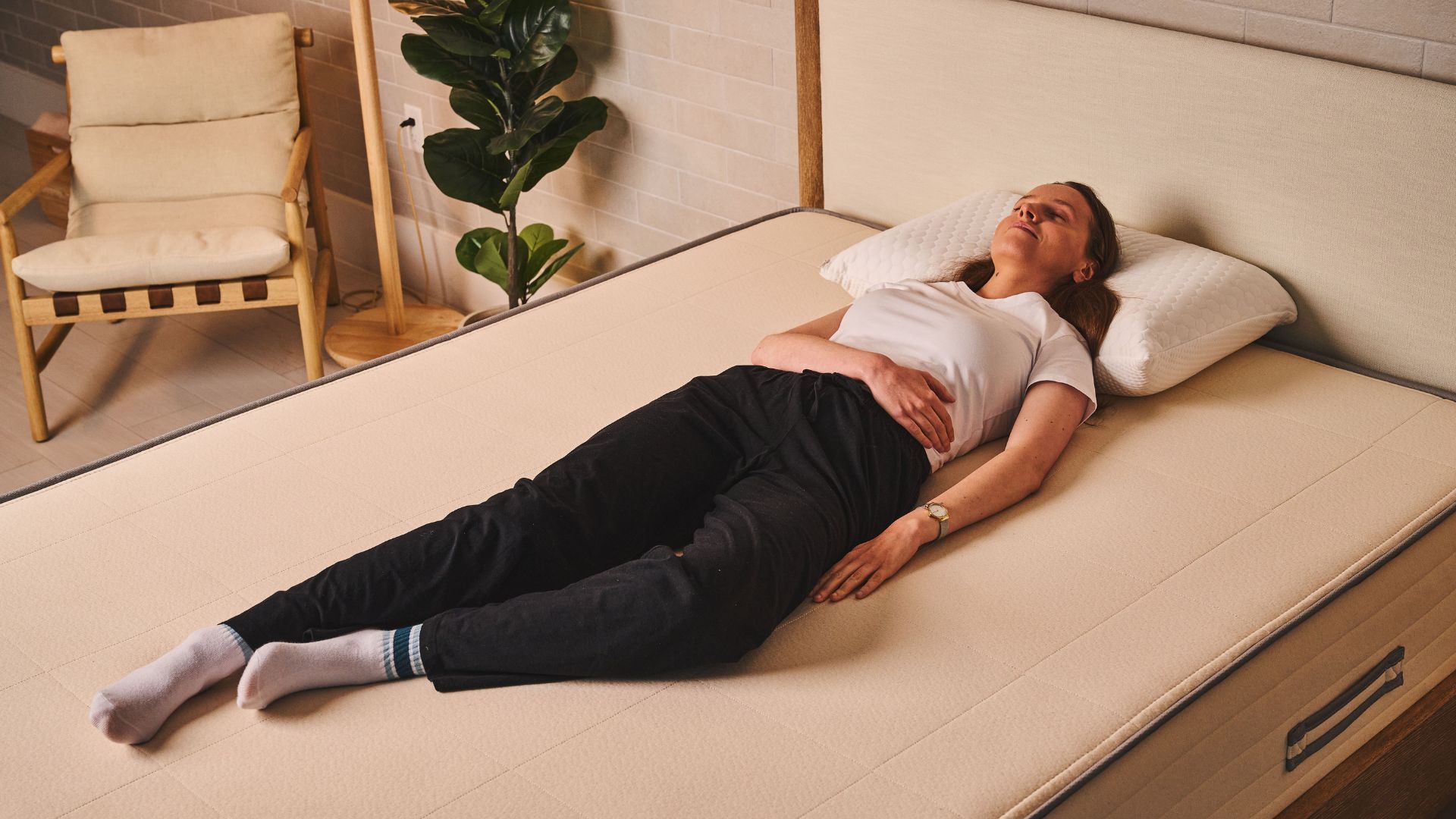
A latex mattress typically has a bouncy and responsive surface. This makes it easier to move around on and prevents you from feeling ‘stuck’, which can occur with denser types of memory foam. Instead of a deep sink, a latex mattress will gently cradle your joints for a more subtle form of pressure relief.
The type of latex used will affect the overall feel of the mattress. The two natural latex types are Talalay and Dunlop. Talalay latex is known for its softness and breathability, making it a popular choice for comfort layers. Dunlop latex is dense and durable, so it's often used as a support layer. Synthetic latex isn't as buoyant or breathable as its natural counterparts.
Memory foam vs latex mattresses: Key differences
- Memory foam offers deeper pressure relief
- Latex is better for ease of movement and durability
- Either type can be useful for sleepers with back pain
Memory foam and latex have their advantages, but one mattress type will be better for you than the other depending on your sleep needs. Here's how they differ...
Durability: Natural latex is far more durable than memory foam. The average lifespan of a mattress is 10 years for memory foam and 15 to 25 years for latex. Either way, knowing how to properly care for your mattress will help you get as many nights out of it as possible, no matter the materials.
Ease of movement: Latex mattresses are bouncy and responsive. This makes them easier to move around on — a huge benefit if you're a combi sleeper. Memory foam mattresses are generally slower to adapt and closely hug your body, so you may have a harder time switching positions.
Firmness: You'll be able to find memory foam and latex mattresses in a variety of firmness levels. Overall, latex-based beds will be firmer — or at least seem that way since you won't be sinking into them as much.
Motion transfer: If you share a bed with a restless partner, memory foam reduces the impact of any movement better than latex can.
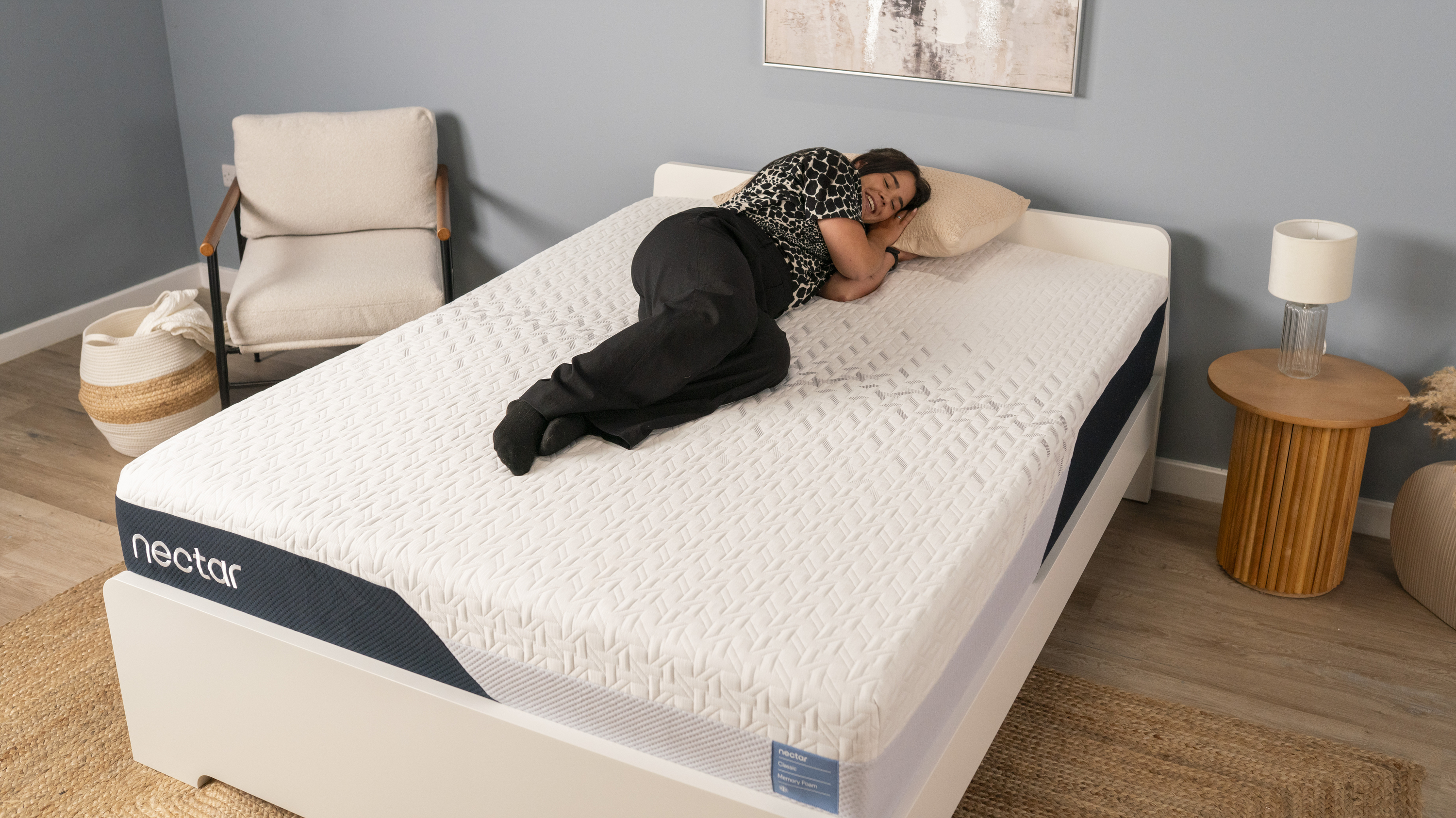
Pressure relief: Memory foam is particularly effective here as it molds to the shape of your body and deeply cushions the joints. Latex is also great for pressure relief, but the contouring will be more subtle.
Setup: Memory foam mattresses are usually easier to maneuver since they're not as heavy as latex beds. However, memory foam beds are more prone to off-gassing, especially if they've been boxed up for a long time.
Sleep style: Side sleepers will like how memory foam eases the pressure points (hips, shoulders, back, and knees). Stomach sleepers should find latex firm enough to keep their hips level — and combi sleepers will appreciate its ease of movement. Back sleepers may fare better with latex or a hybrid mattress that pairs memory foam with springs.
Support: Latex is known for being more supportive than memory foam for heavier sleepers; lighter sleepers may find latex mattresses too unyielding.
Temperature: Memory foam tends to absorb and trap body heat unless it's been treated with cooling agents or aerated to allow for airflow. Still, natural latex is usually a better bet for hot sleepers because it's inherently breathable.
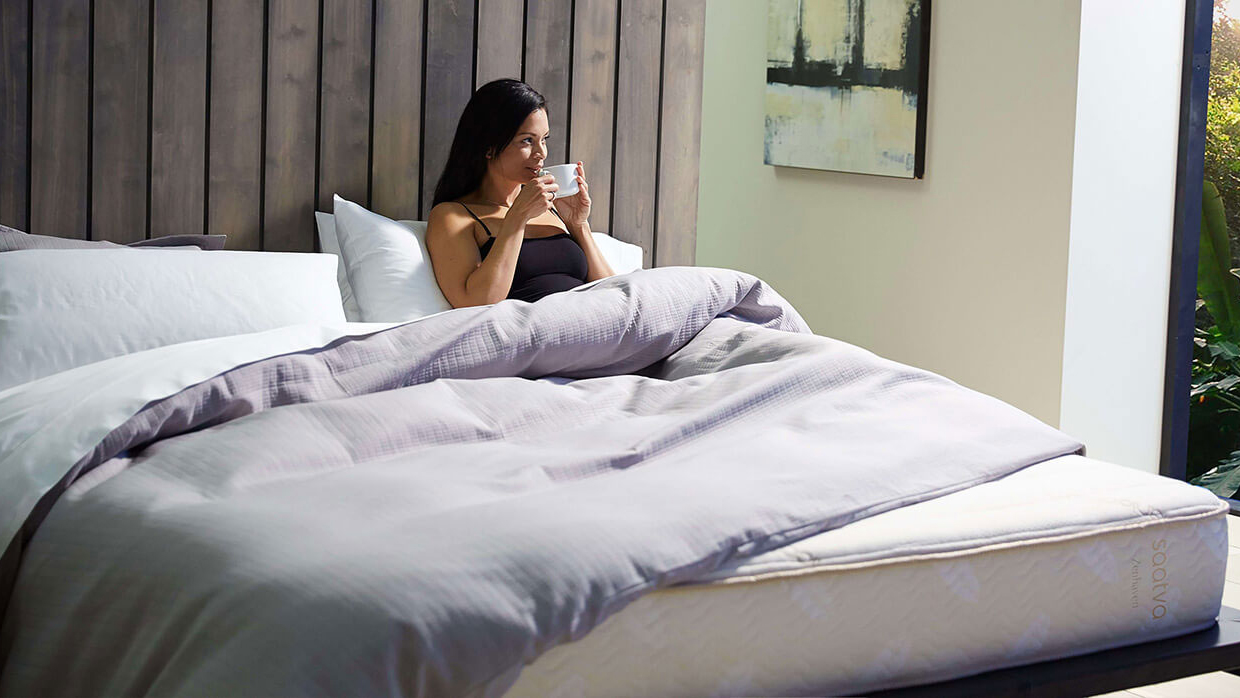
Which is better for back pain?
The best mattresses for back pain comprise a multitude of materials. When choosing between a memory foam and a latex mattress, either one can be helpful to sleepers with back pain. What's most important is choosing a mattress that's the right level of firmness for your sleep style and body type.
To quickly sum it up: memory foam will appeal to side sleepers who like a cushy bed feel — but be careful not to go too soft, as that could throw you out of alignment. Latex won't offer the deep pressure relief of memory foam but for back and stomach sleepers, it'll provide exceptional support for the lower back and hips.
Memory foam vs latex mattresses: Which should you buy?
Buy a memory foam mattress if...
✅ You need profound pressure relief: Whether you're a side sleeper or regularly deal with joint pain, the deep contouring of a memory foam mattress will go a long way in helping you sleep better.
✅ You share a bed: Dense memory foam will absorb nearly every movement. That means if you share a bed with a partner or pet, you're less likely to be disturbed when they fidget or get up.
✅ You're not looking to spend a whole lot: While there are affordable latex mattresses out there, they'll still cost more than a comparable all-foam model.
Top memory foam mattress deals today
Nectar Classic Memory Foam Mattress (queen): was $1,664 now $649 at Nectar
Our top-rated memory foam mattress, the Nectar Classic takes everything we loved about the Nectar Original while adding greater support for most types of sleepers. While you won't experience a quicksand-like sink, you'll still enjoy loads of pressure relief. Not only is this a great price, but Nectar also includes a one-year trial and a forever warranty. Read more in our Nectar Classic Memory Foam Mattress review.
Saatva Contour5 Memory Foam Mattress (queen): was $2,999 now $2,699 at Saatva
Saatva is best known for its deluxe innerspring hybrid beds, but its all-foam Contour5 is just as luxurious as the rest of the lineup. Choose between medium and firm for your ideal level of support. We also think it's a safe choice for hot sleepers who like the hug of memory foam, as this doesn't trap heat as much as comparable beds. In addition to a one-year trial and a forever warranty, free in-home setup and mattress haul-away are also included. Read more in our Saatva Contour5 Mattress review.
Buy a latex mattress if...
✅ You like to sleep 'on' your mattress: Latex is buoyant and relatively firm compared to most memory foam. Combination back and stomach sleepers will like the level of support and ease of movement.
✅ You want a breathable mattress: Yes, there are memory foam cooling mattresses but natural latex does an outstanding job maintaining a comfortable sleeping temperature, especially when paired with other natural materials like cotton and wool.
✅ You're looking for a 'forever mattress': Latex mattresses can withstand a lot of use and may even last you decades with proper maintenance. You'll be paying more upfront, but you'll be getting your money's worth.
Top latex mattress deals today
Avocado Green Mattress (queen): was from $1,999 now from $1,799 at Avocado Green
This organic hybrid mattress boasts GOLS-certified organic latex plus organic wool and cotton. It's a supremely supportive bed as-is, but for a softer touch and more pressure relief, you can add a box-top or a pillow-top. It's bed handcrafted in Los Angeles to a very high standard and that's reflected in the cost. You'll get a year to try it at home and a 25-year warranty to back up your purchase. Read more in our Avocado Green Mattress review.
Helix Birch Natural Mattress (queen): was $1,873.75 now $1,499 at Helix
The Birch Natural is firm enough to support back and front sleepers, yet it has enough give to help most side sleepers feel at ease. (It uses Talalay latex, which is typically softer than Dunlop latex.) Plus, it has plenty of bounce — ideal for switching positions at night. And if you're a hot sleeper, this is the best organic cooling mattress we've tried. Included are a 100-night trial and a lifetime warranty. Read more in our Birch Natural Mattress review.
If you’re ready to invest in a new mattress but still aren’t quite sure which type to go for, our feature on how to choose a mattress will give you some great tips.
Sign up to get the BEST of Tom's Guide direct to your inbox.
Get instant access to breaking news, the hottest reviews, great deals and helpful tips.

Jo Plumridge is an experienced mattress reviewer with several years' experience covering all things mattresses and sleep, and who tests memory foam, hybrid and organic mattresses. What Jo doesn't know about a boxed mattress isn't worth knowing, so naturally we tasked her with producing a series of features for Tom's Guide looking at all aspects of mattresses, from how to pick between latex and memory foam (it's a tricky one), to the seven mistakes people make when buying a mattress for the first time. When testing the DreamCloud Luxury Hybrid for Tom's Guide, Jo said: "I loved the back support and pressure relief it offered. Plus, it looks far more expensive than it is." When she isn’t writing about sleep, Jo also writes extensively on interior design, home products and photography.
- Alison BarrettaFreelance reviewer and writer
You must confirm your public display name before commenting
Please logout and then login again, you will then be prompted to enter your display name.
